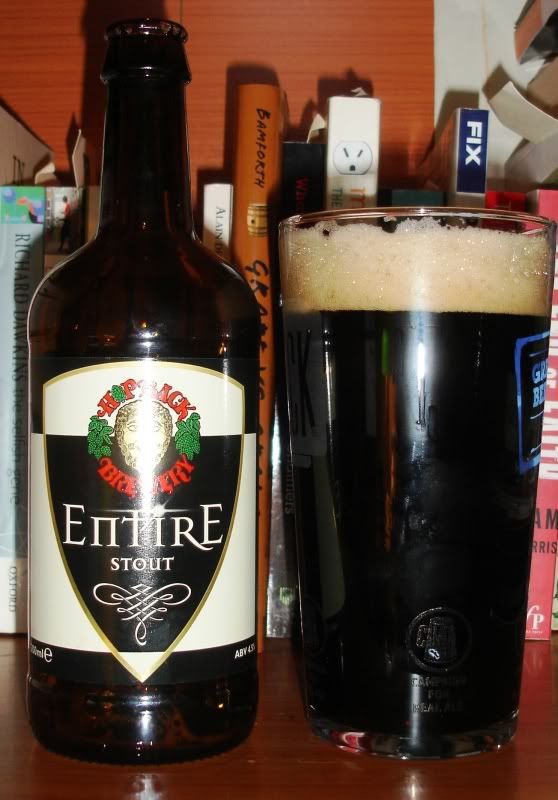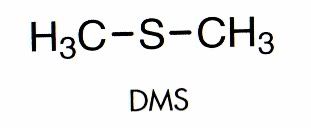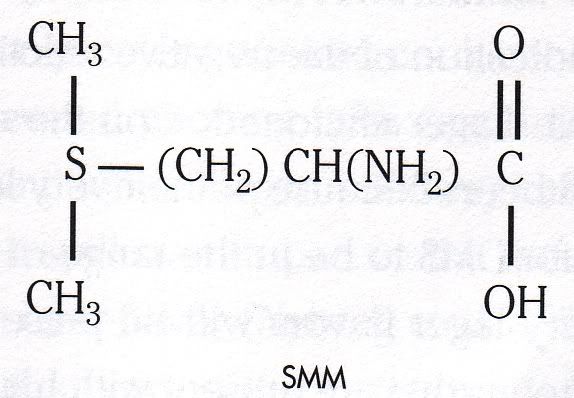 This quarter's CAMRA Beer Club belatedly arrived yesterday, just as I was starting to get a little concerned about it. A previous delivery had gone missing in the post so I get a little nervous when it's overdue. This month's motley crew of real ale look quite promising. Among them is Entire Stout by the Hopback Brewery of Wiltshire. So effective is the marketing of their golden ales it is very strange indeed to see a black beer coming from one of their bottles. I have enjoyed Summer Lightning many times in the past both bottled in Ireland and on cask in England and each time thought it a wonderful beer. I was surprised when Tim said he noted a distinct DMS note to it, and swiftly commented that DMS in unlikely in a beer brewed with pale malts. I had to eat my words shortly afterwards when I tried a bottle out of curiosity and was met with a strong vegetal note, typical of high DMS levels.
This quarter's CAMRA Beer Club belatedly arrived yesterday, just as I was starting to get a little concerned about it. A previous delivery had gone missing in the post so I get a little nervous when it's overdue. This month's motley crew of real ale look quite promising. Among them is Entire Stout by the Hopback Brewery of Wiltshire. So effective is the marketing of their golden ales it is very strange indeed to see a black beer coming from one of their bottles. I have enjoyed Summer Lightning many times in the past both bottled in Ireland and on cask in England and each time thought it a wonderful beer. I was surprised when Tim said he noted a distinct DMS note to it, and swiftly commented that DMS in unlikely in a beer brewed with pale malts. I had to eat my words shortly afterwards when I tried a bottle out of curiosity and was met with a strong vegetal note, typical of high DMS levels.I might take a minute to jot down a few notes on dimethyl sulphide (DMS) to clarify why it is unusual to note it in some beer rather than others. It is a sulphur compound as the name suggests, and like mo
 st sulphur compounds is quite unpleasant smelling. It is a common feature of some lagers because lager malt contains large amounts of the precursor to DMS, S-methyl methionine (SMM), but the levels are low enough to add a distinct character to the lager which is often desirable. SMM is broken down into DMS by heat which in brewing occurs during the boil and during kilning in the production of malt. Thankfully DMS is quite volatile so it is driven off to the atmosphere during these processes. Pale ale malt is kilned at a high temperature compared to lager malt and as a result most of the DMS is driven off leaving very little in the finished malt. This explains my surprise that a golden ale brewed presumably with pale ale malt would have a stro
st sulphur compounds is quite unpleasant smelling. It is a common feature of some lagers because lager malt contains large amounts of the precursor to DMS, S-methyl methionine (SMM), but the levels are low enough to add a distinct character to the lager which is often desirable. SMM is broken down into DMS by heat which in brewing occurs during the boil and during kilning in the production of malt. Thankfully DMS is quite volatile so it is driven off to the atmosphere during these processes. Pale ale malt is kilned at a high temperature compared to lager malt and as a result most of the DMS is driven off leaving very little in the finished malt. This explains my surprise that a golden ale brewed presumably with pale ale malt would have a stro ng DMS element to its character. The smell of DMS appears to vary with its concentration. Bamforth describes it as 'cat urine' which I can agree with because this is the distinct smell I get from Heineken, particularly in bottles. This might sound like I'm slagging Heineken off, but in fact a high DMS aspect in a lager suggests that it is made with a great deal of malt, rather than cheaper adjuncts that might thin out the body. The other smell commonly used is cooked corn, which I must confess I have never experienced. Another common smell is a rotting vegetable like odour, clearly outlined to me during a brewing course I undertook during which a concentrated DMS solution was passed around for us to smell. It had the unmistakable odour of cabbage left to rot in the drain of a sink after the washing up is done.
ng DMS element to its character. The smell of DMS appears to vary with its concentration. Bamforth describes it as 'cat urine' which I can agree with because this is the distinct smell I get from Heineken, particularly in bottles. This might sound like I'm slagging Heineken off, but in fact a high DMS aspect in a lager suggests that it is made with a great deal of malt, rather than cheaper adjuncts that might thin out the body. The other smell commonly used is cooked corn, which I must confess I have never experienced. Another common smell is a rotting vegetable like odour, clearly outlined to me during a brewing course I undertook during which a concentrated DMS solution was passed around for us to smell. It had the unmistakable odour of cabbage left to rot in the drain of a sink after the washing up is done.Getting back to the beer in hand, it's a nicely bitter stout with some chocolate in there somewhere, which really comes through during the swig when your nose is buried in the glass. The roasted barely is clearly evident to me at the moment because of late I have been drinking my own dark beer which is without any roasted barley at all. The bottle states it is suitable for vegans because it is not fined and has no residue of marine swim bladders in the form of isling glass. It seems common enough practice for brewers not to fine or filter their stouts, the Porterhouse don't bother either because stouts will hide any haze issues. All the better for us because nothing is stripped from the beer. It might not be so good for a work colleague of mine with a yeast sensitivity who asked me a few years ago if there was any yeast in commonly available draught beers. In my then ignorance, I told her no, it is all filtered, except for wheat beer, so she'd be safe enough. Let's hope she doesn't get a hankering for decent stout anytime soon...
2 comments:
I had another bottle of Summer Lightning again recently and it had DMS still - but also seemed very immature with a load of acetaldehyde in it.
There is definetely some quality conrol issues going on there,
Really interesting post. I never understand the off flavours in beer and being able to put a name and an explanation to them is great.
Post a Comment